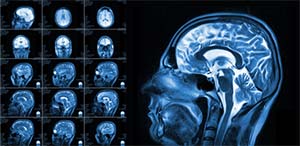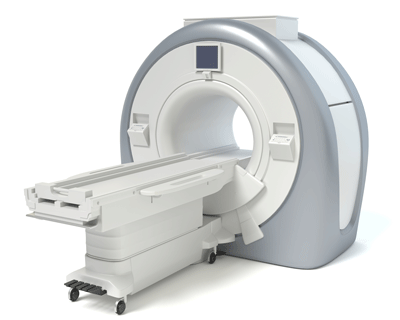MRI Contrast Side Effects | MRI Contrast Issues from Gadolinium
MRI Side Effects from Gadolinium Based Contrast Agents

Gadolinium, a heavy metal used in contrast dyes to enhance viewing of internal organs during MRI, has been found to cause serious and chronic side effects. Long known to be toxic to humans, gadolinium was approved for MRI contrast agents because manufacturers assured the FDA the metal would be excreted from the body by persons with normal renal function. Research and adverse event reports now show that even with normal kidney function, some patients retain deposits of gadolinium in their brains, organs, or other bodily tissues, resulting in gadolinium deposition disease. This page contains an overview of MRI contrast side effects from gadolinium.
What is gadolinium?
Gadolinium (Gd) is a nonradioactive, paramagnetic element in the lanthanide series. A heavy metal, gadolinium is the active element in contrast agents, which are medical products used to enhance magnetic resonance imaging (MRI). Because gadolinium is known to be toxic to humans, the metal is bonded to another substance known as a chelate, which is intended to decrease the likelihood that gadolinium will interact with bodily tissues and aid the body in releasing this harmful substance after the MRI is complete.
Gadolinium-based contrast agents (GBCAs) enhance a radiologist's ability to see organs and blood vessels in the body and detect abnormalities such as a tumor. GBCAs have been in use since 1988. The American Society of Neuro Radiology and the American College of Radiology estimate that more than 30 million patients get MRIs each year; the number of people potentially affected by MRI contrast agent side effects is significant.

MRI Contrast Issues
Gadolinium-based contrast agents are made in three different ways; those known as linear agents are found to cause the highest rate of contrast agent side effects. Whereas manufacturers of GBCAs received FDA approval on the promise that gadolinium would not be retained in the body of persons with normal kidney function, we now know that anyone -- including persons with normal renal function -- can suffer from MRI contrast agent side effects.
Gadolinium contrast side effects are referred to as Gadolinium Deposition Disease, which occurs when deposits of gadolinium build up in brain and bone tissues. Patients who have had as few as four MRIs using gadolinium dye have been documented to develop contrast agent side effects. The amount of gadolinium found in a patient's body correlates to the number of exposures they have had. The retention of gadolinium causes long term MRI contrast side effects that impact the brain and body.
Symptoms of contrast agent issues, which can appear within hours of exposure to the substance, include bone pain, burning pain of the skin and subcutaneous tissue and “brain fog†or cognitive decline. Kidney damage has also been associated with contrast agent side effects. Late stage or extreme gadolinium contrast side effects include a thickening and discoloration of the skin and fibrosis of muscle, fascia, lungs and heart known as nephrogenic system fibrosis (NSF). NSF was previously thought to only affect persons exposed to gadolinium with a previous history of kidney damage. NSF cases have been reported in connection to the top five FDA approved agents: MagneVist, MultiHance, Omniscan, OptiMARK, and ProHance. More research is underway to understand how often NSF results from MRI contrast dye exposure.
The MRI Lawsuit of Chuck Norris' wife
In 2017, Gena Norris, celebrity actor and martial artist Chuck Norris' wife, filed a contrast agent side effects lawsuit against three manufacturers of gadolinium based contrast agents. Gena Norris suffers from MRI contrast side effects and has sustained long term damage. Chuck Norris' wife's symptoms include a burning pain throughout the body, violent shaking, numbness, tingling, weakness, cognitive deficits, kidney damage, and difficulty breathing. Gena and Chuck Norris are seeking damages of more than $10 million, claiming manufacturers should have warned consumers of the risk posed by MRI contrast side effects. The couple testified at an FDA panel on the subject of gadolinium contrast side effects in September of 2017.
MRI Contrast Side Effects Research
Multiple FDA contrast agent warnings have been issued in recent years in response to new studies and consumer pressure. In July of 2015, the federal agency announced its intent to investigate MRI contrast side effects. Then in May of 2017, a second FDA MRI contrast agent warning was issued, stating evidence of gadolinium retention had been confirmed yet no adverse effects or negative consequences of the heavy metal staying in the body had been determined. Most recently, just after Chuck Norris' wife filed her contrast agent side effects lawsuit, the third FDA MRI contrast warning was issued, identifying linear GBCAs as the most dangerous for gadolinium retention. Popular products such as Omniscan, OptiMARK, and Magnevist are all linear contrast agents.
Let Our MRI Contrast Lawyers Help You
Our attorneys specialize in holding large corporations accountable when they've placed profits ahead of safety. Through settlements and winning verdicts, our attorneys have obtained millions for our clients. Let us help you today.
MRI Contrast Issues Lawsuits
Filing a lawsuit will allow you to hold the pharmaceutical company accountable for damage it has caused you or a loved one, while also providing real compensation for your medical expenses, suffering and loss. Contact us today for a free consultation.
Onder Law Has Been Covered By:















Austin, TX
Baltimore, MD
Birmingham, AL
Boston, MA
Buffalo, NY
Chicago, IL
Cincinnati, OH
Cleveland, OH
Columbus, OH
Dallas, TX
Denver, CO
Detroit, MI
Fresno, CA
Hartford, CT
Honolulu, HI
Houston, TX
Indianapolis, IN
Jacksonville, FL
Kansas City, MO
Las Vegas, NV
Los Angeles, CA
Louisville, KY
Memphis, TN
Miami, FL
Milwaukee, WI
Minneapolis, MN
Nashville, TN
New Orleans, LA
New York, NY
Oklahoma City, OK
Orlando, FL
Philadelphia, PA
Phoenix, AZ
Pittsburgh, PA
Portland, OR
Providence, RI
Richmond, VA
Riverside, CA
Rochester, NY
Sacramento, CA
Salt Lake City, UT
San Antonio, TX
San Diego, CA
San Francisco, CA
San Jose, CA
Seattle, WA
St. Louis, MO
Tampa, FL
Tucson, AZ
Tulsa, OK
Virginia Beach, VA
Washington, DC
Alaska
Arizona
Arkansas
California
Colorado
Connecticut
Delaware
Florida
Georgia
Hawaii
Idaho
Illinois
Indiana
Iowa
Kansas
Kentucky
Louisiana
Maine
Maryland
Massachusetts
Michigan
Minnesota
Mississippi
Missouri
Montana
Nebraska
Nevada
New Hampshire
New Jersey
New Mexico
New York
North Dakota
Ohio
Oklahoma
Oregon
Pennsylvania
Rhode Island
South Carolina
South Dakota
Tennessee
Texas
Utah
Vermont
Virginia
Washington
West Virginia
Wisconsin
Wyoming
